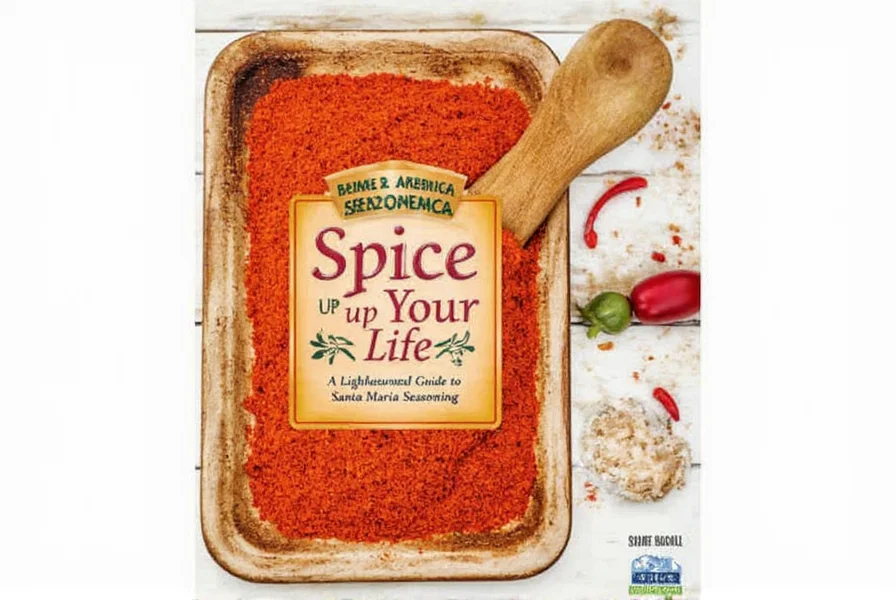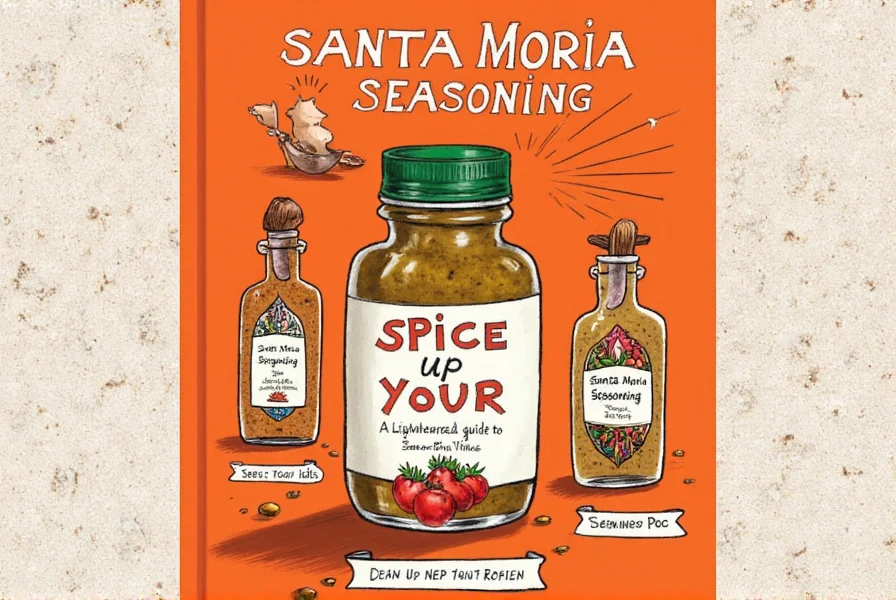Santa Maria seasoning is a traditional spice blend originating from Santa Maria, California, developed in the mid-20th century for grilling tri-tip steak. This savory blend typically includes garlic, onion, paprika, cumin, and other herbs, creating a rich flavor profile that enhances grilled meats, vegetables, and various dishes.
First popularized by local ranchers in the 1950s, Santa Maria seasoning became a staple at community barbecues across Central California. The blend was designed to complement the region's famous tri-tip steak, a cut of beef that gained popularity through these gatherings. Today, it's widely used beyond the region for its versatile flavor.
Typical ingredients in Santa Maria seasoning include:
- Garlic powder
- Onion powder
- Paprika (smoked or sweet)
- Cumin
- Black pepper
- Oregano
- Salt
- Optional: cayenne pepper for heat
This combination creates a balanced, savory flavor with subtle smokiness and mild heat, perfect for enhancing grilled foods without overpowering them.

Using Santa Maria seasoning is simple and versatile. Here are some popular ways to apply it:
- For meats: Rub generously on steaks, chicken, or pork before grilling. Let it sit for 30 minutes to allow flavors to penetrate.
- For vegetables: Sprinkle on bell peppers, zucchini, or corn before grilling for a flavorful side dish.
- For soups and stews: Add a teaspoon to enhance depth of flavor.
- As a dry rub: Mix with olive oil for a wet rub on ribs or chicken.
- For roasted potatoes: Toss with oil and seasoning before roasting.

Practical Tips for Perfect Results:
- Use fresh ingredients: Fresh meat and vegetables absorb seasoning better than frozen options.
- Don't overdo it: Start with 1-2 teaspoons per pound of meat, adjust to taste.
- Pair wisely: Works well with simple sides like grilled corn, baked potatoes, or fresh salad.
- Store properly: Keep in an airtight container away from heat and light to maintain freshness for up to 2 years.

Buying Guide for Santa Maria Seasoning
When purchasing Santa Maria seasoning, consider these key factors:
| Feature | What to Look For |
|---|---|
| Ingredients | Check for clear ingredient list with natural spices; avoid artificial additives or fillers |
| Brand reputation | Choose brands with positive reviews and consistent quality (e.g., local California producers) |
| Packaging | Airtight containers or resealable bags to preserve freshness |
| Heat level | Traditional blends have mild heat; look for "original" or "classic" versions if you prefer less spice |
Authentic Santa Maria seasoning should reflect Central California's culinary heritage. Many reputable brands source ingredients locally and maintain traditional recipes.
Frequently Asked Questions
What is the traditional origin of Santa Maria seasoning?
Santa Maria seasoning originated in the coastal town of Santa Maria, California, in the 1950s when local ranchers developed it to complement their famous tri-tip steak. The blend evolved from Mexican and Portuguese culinary traditions that shaped Central California's food culture, and it became a staple at community barbecues that drew people from across the region.
Can Santa Maria seasoning be used for dishes other than meat?
Absolutely! While traditionally used for grilled meats, Santa Maria seasoning enhances many dishes: mix it into hummus or guacamole for dipping, sprinkle on roasted sweet potatoes, add to tomato-based pasta sauces, or use in bean chili recipes. It also works well on popcorn, roasted nuts, and even in vegetable stir-fries for extra flavor depth.
How long does Santa Maria seasoning stay fresh?
Properly stored in an airtight container away from heat, moisture, and sunlight, Santa Maria seasoning maintains peak flavor for 1-2 years. Ground spices gradually lose potency, so you'll notice reduced aroma and color fading over time. For best results, write the purchase date on the container and replace it after two years.
Is Santa Maria seasoning typically spicy?
Traditional Santa Maria seasoning has mild to moderate heat from black pepper and sometimes a small amount of cayenne. The focus is on savory, smoky flavors rather than intense spice. If you prefer milder seasoning, look for "original" or "classic" blends without cayenne. For more heat, you can add extra cayenne or chili powder when using it.
Can I make my own Santa Maria seasoning at home?
Yes, creating your own Santa Maria seasoning is simple and allows customization. A basic recipe includes: 2 tablespoons paprika, 1 tablespoon garlic powder, 1 tablespoon onion powder, 2 teaspoons black pepper, 1 teaspoon cumin, 1 teaspoon dried oregano, 1 teaspoon salt, and 1/2 teaspoon cayenne pepper (optional). Mix thoroughly and store in an airtight container. Homemade versions ensure freshness without preservatives and let you adjust flavors to your preference.











 浙公网安备
33010002000092号
浙公网安备
33010002000092号 浙B2-20120091-4
浙B2-20120091-4